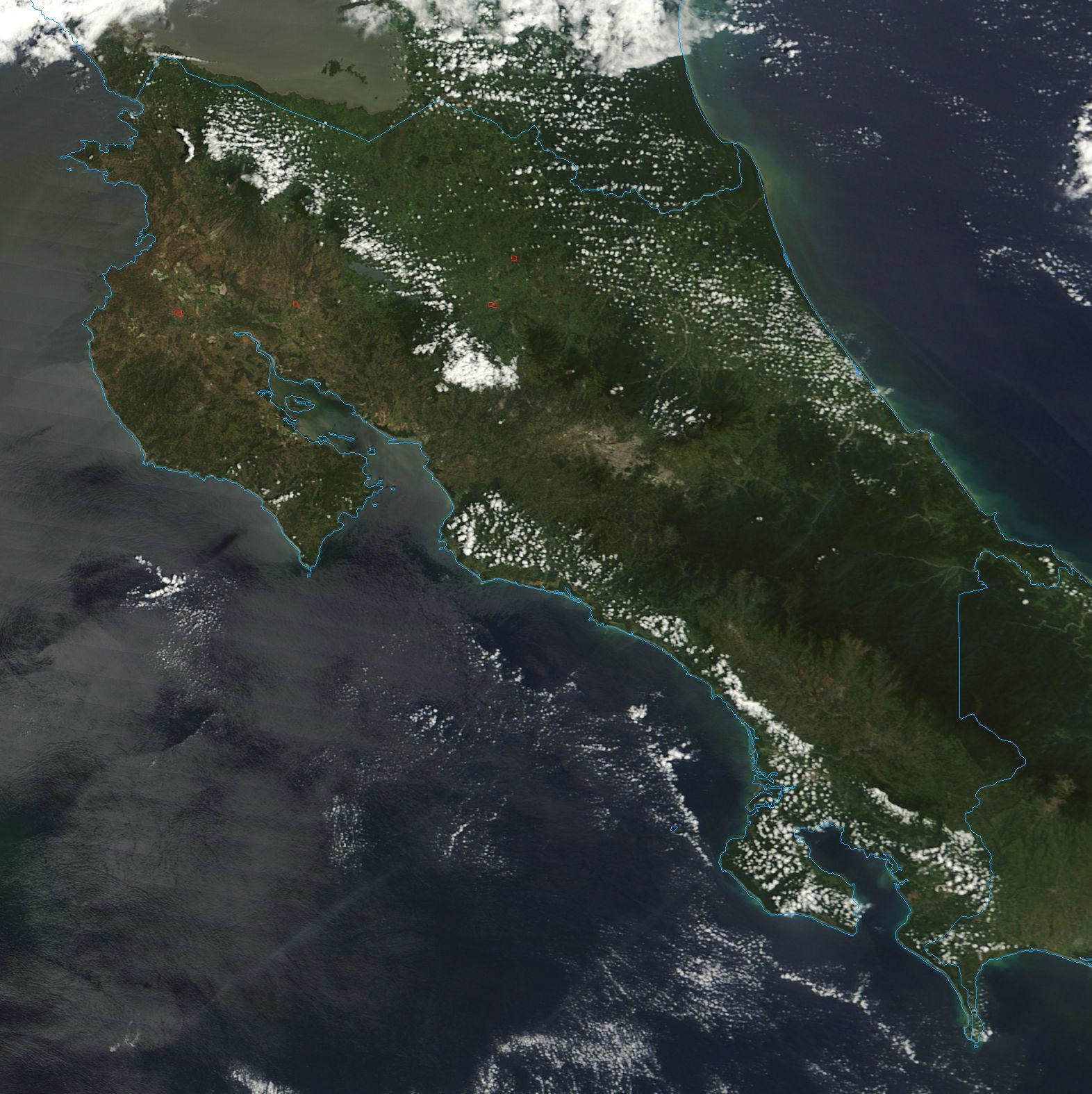In 1884 climatologist Wladimir Koppen created an
intricate climate classification chart. This chart made it possible to create
detailed climate graphs for regions all around the world depending on their
location, precipitation, and sometimes temperature. Using Koppens chart, we can
classify Costa Rica as having an Aw climate. "A" climates are used to
categorize areas that have a tropical/humid climate. While Costa Rica does
indeed have a tropical climate, it can be further classified as an
"Aw" climate because it has dry and wet seasons.
 |
| In this image here, Koppen's climate classification chart is used in unison with a world map. Areas are categorized first by their climate (denoted with a capital letter) then by their precipitation amounts and then their temperatures (denoted by smaller letters). If you look closely between the continents of North and South America, Costa Rica is denoted with an "Aw" climate and colored light pink, meaning it has a tropical climate (A) and that it has a dry/wet season (w). Image Source |
Even
though Costa Rica has wet and dry seasons its climate is relatively stable,
meaning temperatures in specific regions of the country move between certain
temperatures and don't vary too much year round. The lack of temperature
variation in regions of Costa Rica can be attributed to continentality.
 |
| Continentality can be defined by the weather and climate characteristics that impact a location based on its proximity to a body of water. Land loses and gains heat faster than water, meaning it absorbs incoming solar radiation (insolation) at higher rates. Water, however, has a high specific heat so that means it cannot absorb heat very fast; so during the day the water is absorbing heat from the sun and collecting it. Image and Information Source |
 |
| Since Costa Rica is a small country, measuring only 50,900 square meters and is surrounded by water, its temperature variation is decreased because as the lands cool at night (since land heats and cools faster than water) the heat that the water collected over the day moves from the water over the land. This occurs due to the fact that air always moves from high pressure to low pressure and warm air has higher pressure than cold air. Image Source Information Source |
Continentality doesn't mean that the entire country of Costa Rica has a uniform temperature though. In fact, temperatures in Costa
Rica change depending on the location of the area and its elevation; the higher
the elevation the colder it gets. These
temperature changes occur due to the change in pressure which results from
lower and higher altitudes, this process is known as the adiabatic process.
 |
| Here we can see how as an air parcel measuring 30 degrees celsius moves up, air expands and cools and the temperature begins to drop. As this happens heat is not gained or lost, it is simply redistributed over a larger area, and this makes the temperature feel colder than before. If the air parcel moves back down it compresses and begins to warm. (Notice how the air parcels become larger and smaller in size depending on how high up they are). Image Source |
Specifically in the Monteverde Cloud Forest, temperatures
here are derived from orogaphic lifting which is associated with the adiabatic
process. Orographic lifting occurs when air masses are forced to move from low elevation
to higher elevations due to an area's topography. In the case of the Monteverde
Cloud Forest, the slope of the Cordillera Tilaran mountain range pushes air up
into cooler elevations around Monteverde. Since the air here holds less moisture,
excess humidity forms tiny droplets and often takes the form of mist and
clouds and gives us the Cloud Forest we see today.